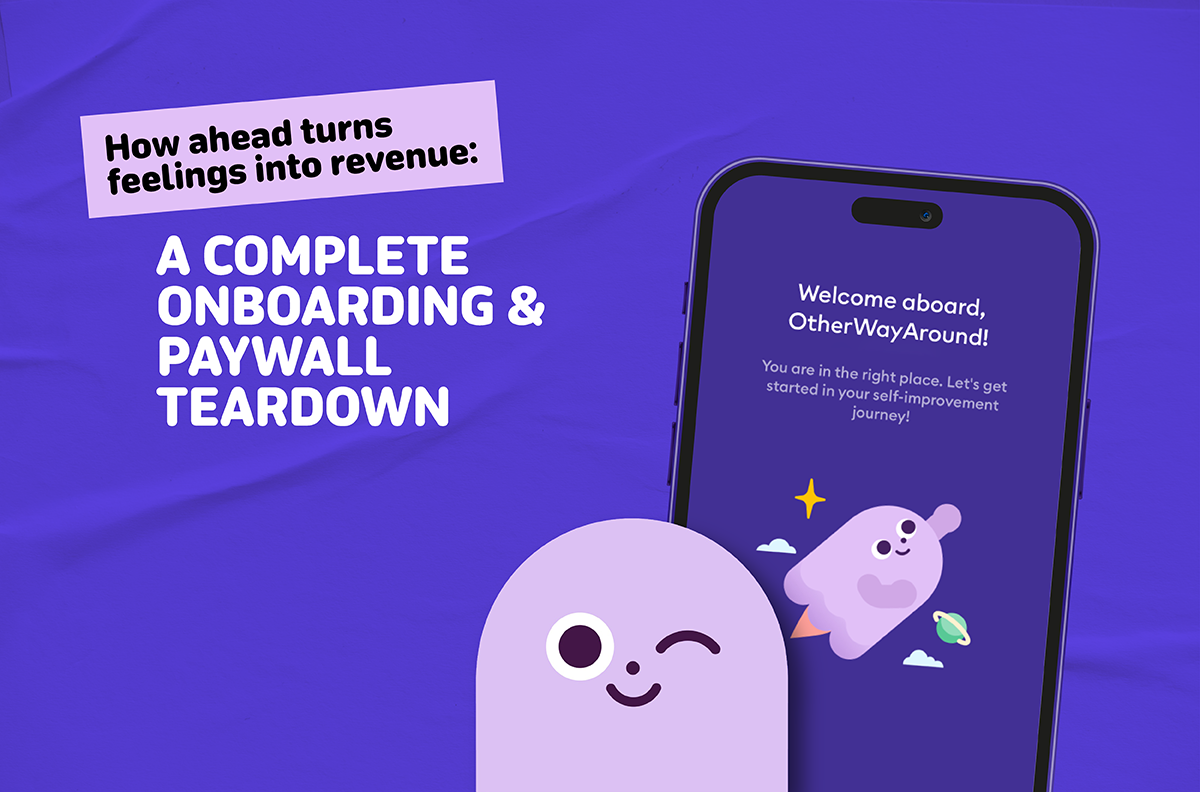Crafting an Effective App Description: Tips and Best Practices
Ignoring the power of a persuasive app description might be costing you users. Explore the best practices to turn things OtherWayAround.
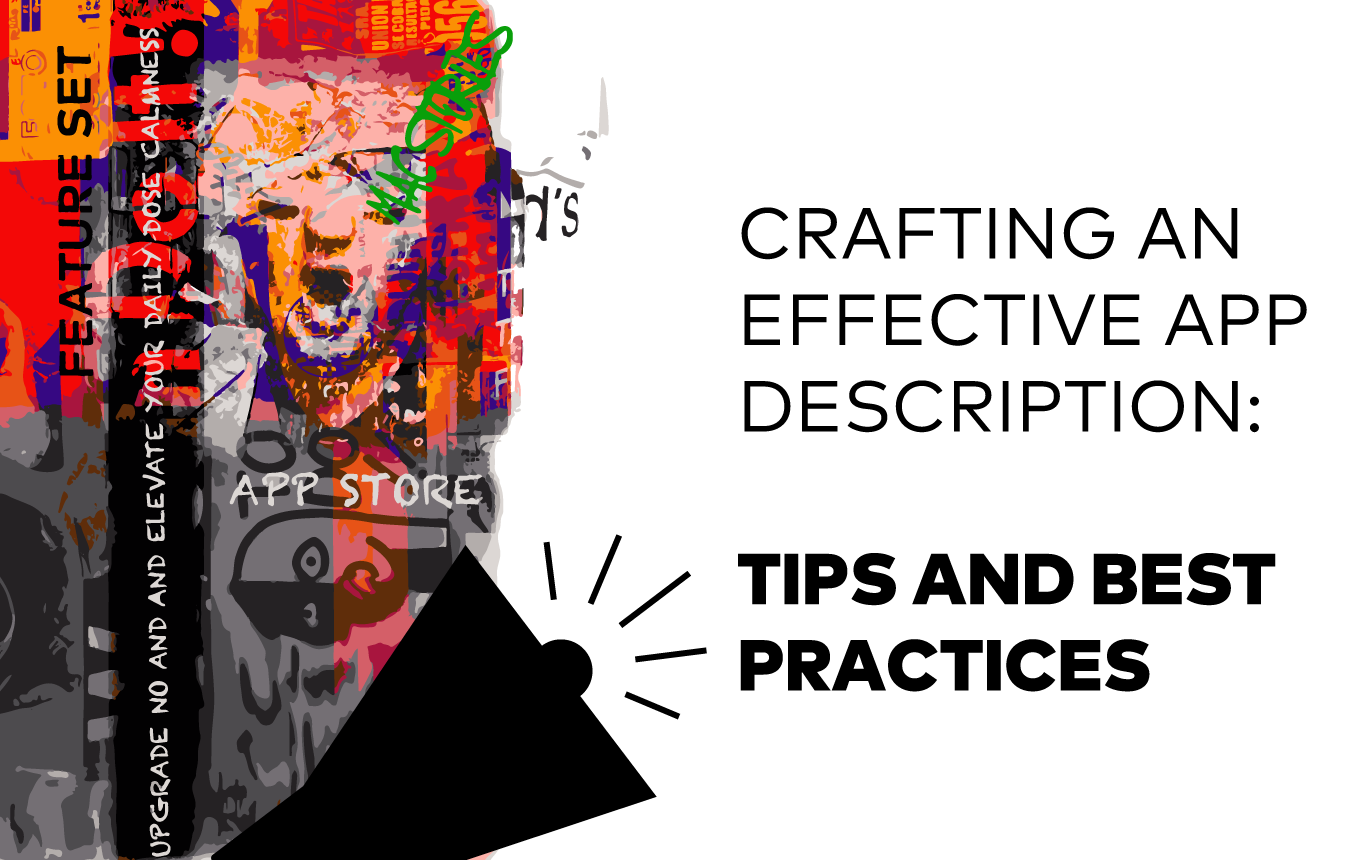
Since you’re already here, you probably don’t think that writing good app descriptions is unimportant. But let’s clear the air.
Yes, your app description matters.
And while the actual words in the description don’t help influence ranking in the App Store, well-placed keywords do help with the Google Play algorithm.
Before we start, here are the character limits:
- Both the Apple App Store and Google Play Store have a maximum character count of 4,000 characters for their app descriptions.
- Google Play gives you an extra 80 characters for a short description.
What is a Short Description?
A short description is an extra space that the Google Play Store offers to the app marketers. This brief piece of text goes along with your app's name.
When people visit your app's page on the Play Store, they'll see:
- The app title
- Developer's name
- App performance stats (average rating, reviews, downloads)
- Screenshots
- An install button
- A short description
If users want more details, they can access it from the longer description.
The words you use in the short description matter to the algorithm, but keep in mind that words in the app's name or high-density keywords in the long description have more impact on rankings.
Also, your short description might show up in other places too. For instance, if Google Play features your app or suggests it to users.
So, make sure not to overlook this section. First impressions matter.
What is an App Description?
The app description is a space both Apple App Store and Google Play Store offer to the app marketers to explain their app in detail.
You might be thinking that everybody’s skipping this section and jumping into the screenshots section. That might be true but it doesn’t mean that you can’t use this section in your favor. You just have to write in the right way. In a way that makes your product page visitors cannot skip it.
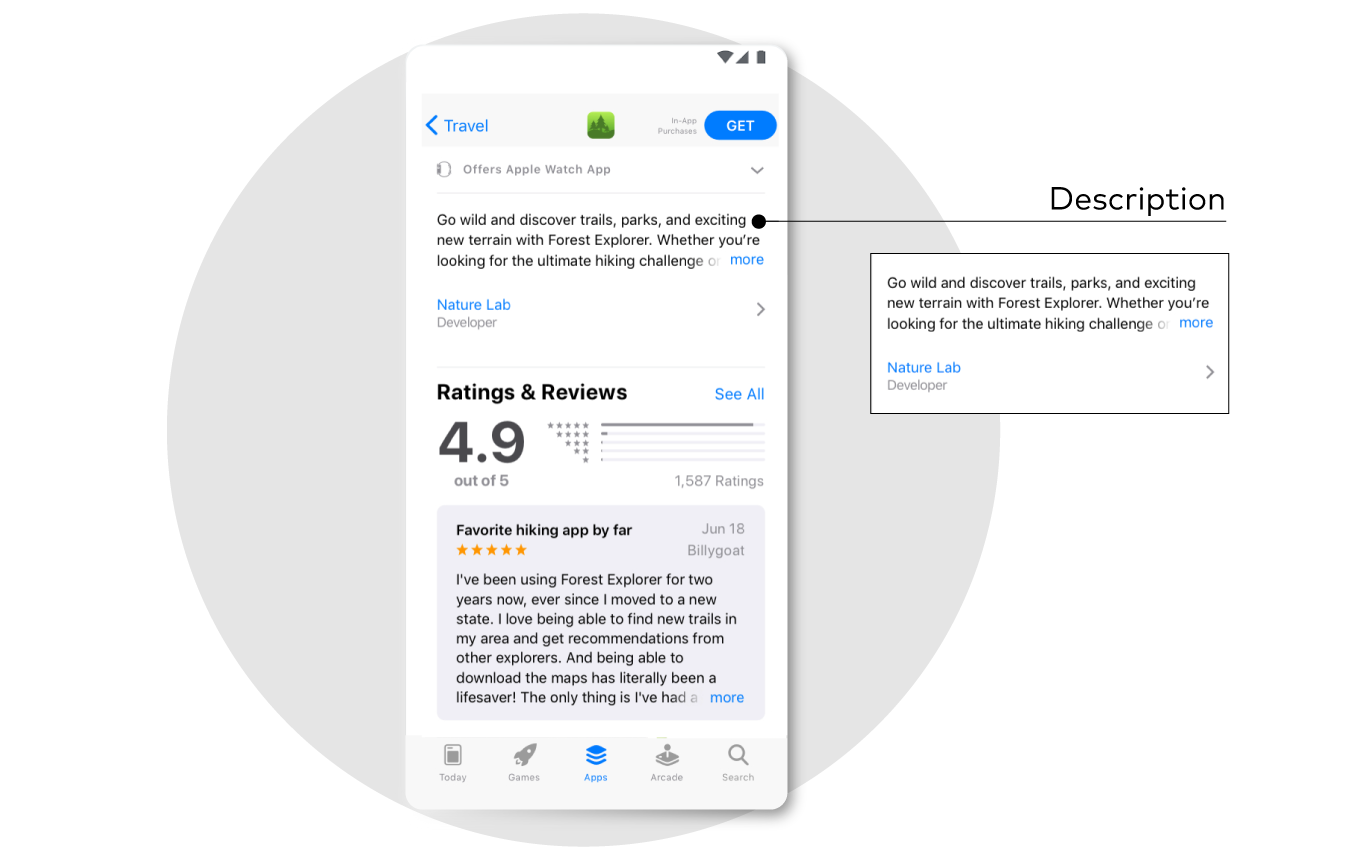
Long story short, this is where you explain the characteristics of your app. You have 4000 characters but you don’t have to use them all. Don’t let the up limits guide you. Ensure you’ve answered all the below:
- What benefits do you offer to the users?
- How do you differentiate from your competitors?
- Do you have features you want to highlight? Go ahead, this is the very spot for this.
- Do you want to have a brand voice? Execute it, right here.
And if it’s done in 1000 characters. Great!
Don’t overwhelm your visitors with unnecessary words just because you have extra space left.
Tips and Best Practices for the Perfect App Description
Short Description
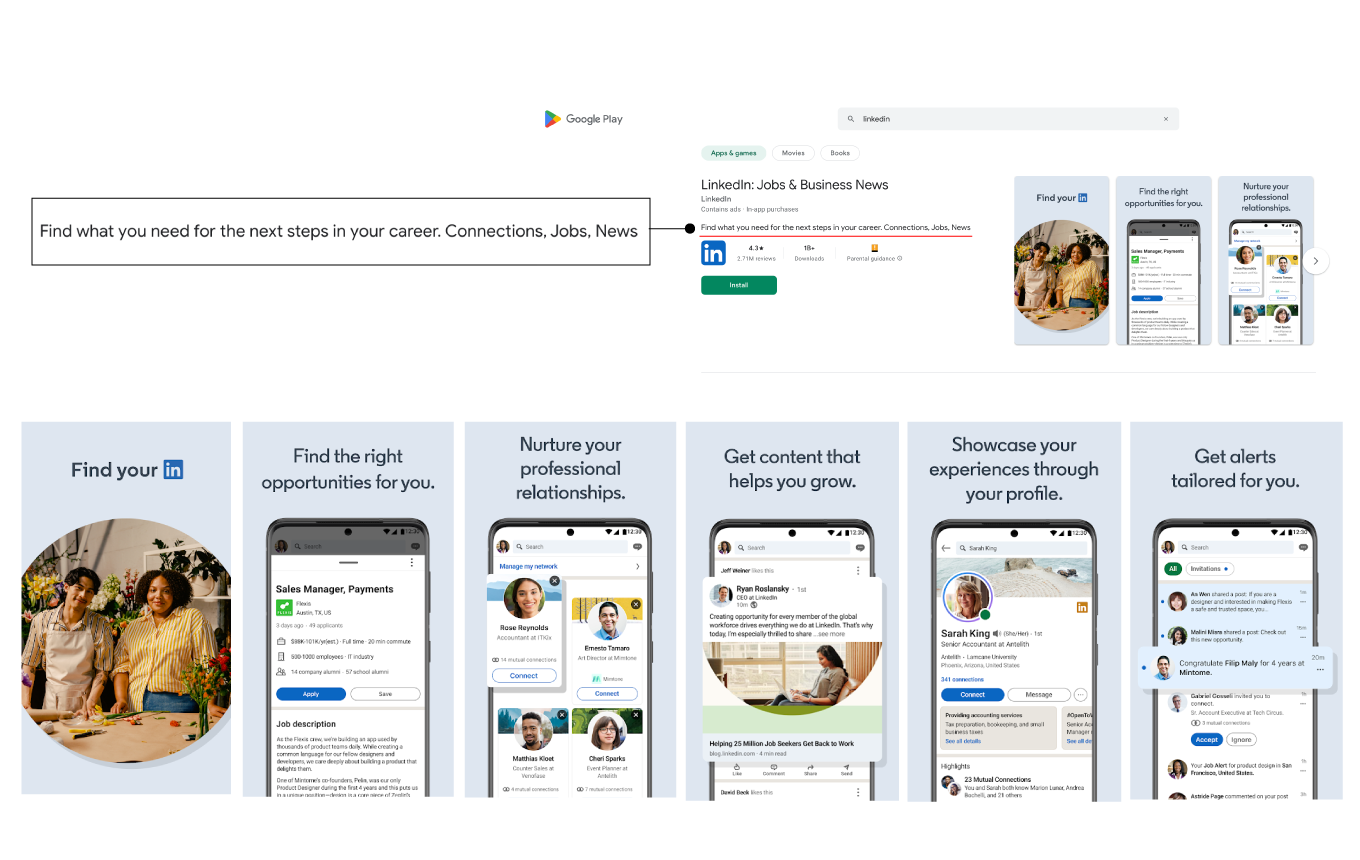
- Google Play says “Don’t do these in your short description”
Avoid duplicated messages, time-sensitive texts, and descriptions unrelated to the main app functions, such as calls-to-action, promo information, and performance elements (#1, top, best, etc..).
Be mindful of capitalization and refrain from using incorrect formatting with special characters. Also, ensure not to use the same description for different languages.
- Instead, highlight your primary features in the short description.
This field matters a lot for the ranking algorithm and is often the only content users read after your app's title. Place your most important features here.
- Ensure that you have a concise and straightforward message.
You should aim to capture your target audience's attention with your short description so you can guide them to explore your product page.
- And don't just toss keywords into your short description.
Google is smart. It knows when you're forcing random words instead of giving helpful info. Also, Play Store reviewers don't like keyword overloading and might reject your app.
Long Description
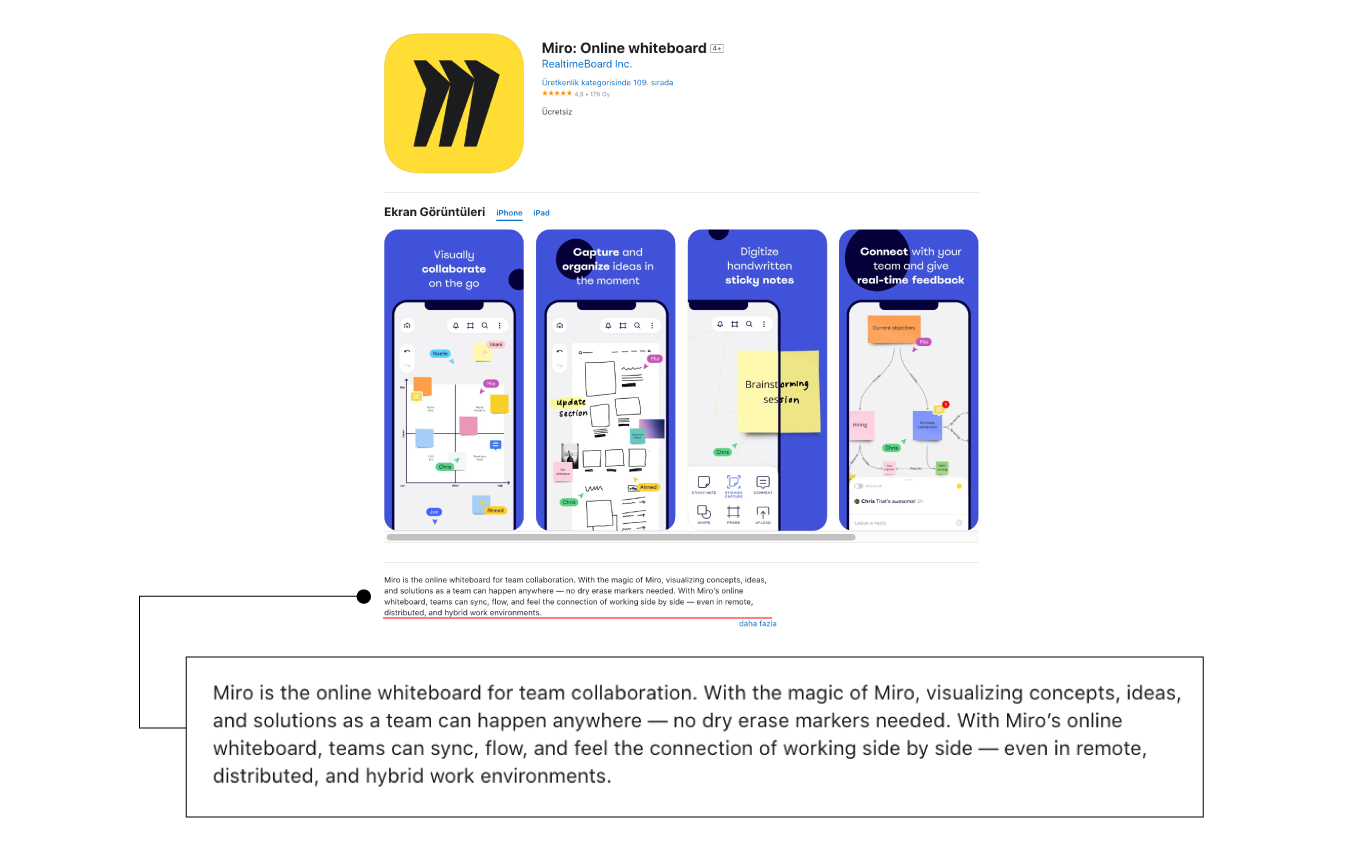
Or simply "description." The term "long description" is specific to Google Play.
- Know your market and your audience.
Do some market research and get to know your audience better, if you haven't already. If you're aware that your users dig particular aspects of your business or you need to share crucial details about app usage, the long description is the spot.
And if you're scratching your head about what's trending, take a peek at keyword search volumes. Apps like MobileAction, Data.ai, or Apptweak can give you a helping hand in this department.
- Pay special attention to your opening sentences.
Let’s accept that not all users will thoroughly read the entire long description. That’s why your first sentences carry significant weight. Seize visitors’ interest by effectively communicating your primary message in the initial 3 lines.
- On Google Play, the order and frequency of the keywords matter.
If you write them often and right at the beginning of your long description (yep, even before hitting that "read more" button), they hold serious weight for both the search algorithm and users.
Dropping your top keywords early on can give your conversion rate a nice lift and help you score higher in the rankings compared to sliding them in further down the description line.
Repeating keywords on the Apple App Store won't give you extra points. It’s the exact opposite on Google Play Store. When you repeat keywords there, you say to Google "Hey, these words really matter for my app!"
- Consider this insider tip!
Aim for around 2% keyword density. And every time you drop an update, toss in more of those target keywords. This way, you'll boost your keywords for better indexing and give your app's visibility a serious lift.
- On the Apple App Store, Use keywords wisely, not wildly.
Carefully choose keywords that define your app. Relevant keywords may not affect your rankings here but they can still grab visitors’ attention. Distribute them strategically within your description. But, avoid going overboard. Too many keywords can leave readers uninterested.
- Don't hesitate to dedicate some of your character count to show off.
Scored an award? Slip it in. Boost your credibility and give visitors a clear sense of what to expect from your app.
- Organize your content smartly.
Break it down into paragraphs, use clear subheadings, and keep things readable. Don't forget about white spaces. Remember, your goal is to help store visitors scan through your content and quickly spot the info that matters most.
- Don't Overlook Localization.
If you're gearing up for a multilingual app launch, ensure you localize your app store description for different storefronts. By localization, we don’t mean translation. While overly vivid or poetic descriptions might look good in your app's native tongue, their charm might get lost in translation.
- Last but not least. Bring the fun and uniqueness.
Avoid being a copycat. Let your brand's personality shine and connect with your audience. It’ll help your brand as long as you don’t harm the clarity of your app’s value propositions.
We know that not everyone has the time to dive into a 4K-word blog post. But trust us, there's a lot more ground to cover beyond what you've seen here. And app descriptions are just a piece of the puzzle when it comes to your product pages
Let's chat about how you can level up your App Store Optimization and establish self-sustained app growth!


.png)
